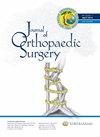通过直接前路同时与分期双侧全髋关节置换术的比较:倾向评分匹配分析。
IF 1.6
4区 医学
Q3 ORTHOPEDICS
引用次数: 0
摘要
目的:目前尚不清楚同时双侧全髋关节置换术(SimBTHA)或分阶段双侧全髋关节置换术(StaBTHA)在临床上是否更优。没有研究将这两种手术方式与患者背景相匹配。本研究旨在阐明SimBTHA采用直接前路入路(SimBTHA- daa)和StaBTHA采用直接前路入路(StaBTHA- daa)之间的差异。方法:纳入2012年至2020年期间接受THA的患者,共1388例患者的1658髋。在对患者背景进行倾向评分匹配后,对102例患者的204髋(每组51例)进行了检查。评估临床和影像学结果、并发症、术中出血量和输血量(BT)。在并发症方面,我们评估了假体周围骨折、肺栓塞、深静脉血栓、手术部位感染和脱位。结果:在最后随访时,两组患者的临床和影像学结果及并发症无明显差异。SimBTHA术中出血量与第一、二期StaBTHA术中出血量之和相等。SimBTHA-DAA的总bt率显著高于StaBTHA-DAA (p < 0.0001)。仰卧位SimBTHA-DAA的同种异体BT率(32.3%)显著高于StaBTHA-DAA (8.3%) (p = .007)。结论:SimBTHA-DAA和StaBTHA-DAA的临床和影像学结果是相同的。同种异体BT率在SimBTHA-DAA中显著高于StaBTHA-DAA。自体BT减少了SimBTHA-DAA中同种异体BT的使用。自动bt可能有助于避免SimBTHA中的allow - bt。本文章由计算机程序翻译,如有差异,请以英文原文为准。
Comparison of simultaneous versus staged bilateral total hip arthroplasty via the direct anterior approach: A propensity score matched analysis.
PURPOSE It remains unclear whether simultaneous bilateral total hip arthroplasty (SimBTHA) or staged bilateral total hip arthroplasty (StaBTHA) is clinically superior. No study has compared these two procedures matching surgical approach and patient background. This study aimed to clarify the differences between SimBTHA using direct anterior approach (SimBTHA-DAA) and StaBTHA using the direct anterior approach (StaBTHA-DAA). METHODS Patients who underwent THA between 2012 and 2020 were enrolled, resulting in a total of 1658 hips of 1388 patients. After propensity score matching for patient background, 204 hips of 102 patients (51 patients in each group) were examined. Clinical and radiographic outcomes, complications, intraoperative blood loss and blood transfusions (BT) were evaluated. In complications, we evaluated periprosthetic fractures, pulmonary embolism, deep venous thrombosis, surgical site infection and dislocation. RESULTS At the final follow-up, clinical and radiographic outcomes and complications were not significantly different between the groups. Intraoperative blood loss was equivalent for SimBTHA and the sum in the first- and second-stage StaBTHA. The total-BT rate was significantly higher for SimBTHA-DAA than for StaBTHA-DAA (p < .0001). The allogeneic BT rate was significantly higher in SimBTHA-DAA in the supine position (32.3%) than in StaBTHA-DAA (8.3%) (p = .007). However, no patient who received autologous BT required allogeneic BT. CONCLUSIONS Clinical and radiographic outcomes were equivalent between SimBTHA-DAA and StaBTHA-DAA. The allogeneic BT rate was significantly higher in SimBTHA-DAA than in StaBTHA-DAA. Autologous BT reduced the use of allogeneic BT in SimBTHA-DAA. Auto-BT may be useful for avoiding allo-BT in SimBTHA.
求助全文
通过发布文献求助,成功后即可免费获取论文全文。
去求助
来源期刊

Journal of Orthopaedic Surgery
ORTHOPEDICS-SURGERY
CiteScore
3.10
自引率
0.00%
发文量
91
审稿时长
13 weeks
期刊介绍:
Journal of Orthopaedic Surgery is an open access peer-reviewed journal publishing original reviews and research articles on all aspects of orthopaedic surgery. It is the official journal of the Asia Pacific Orthopaedic Association.
The journal welcomes and will publish materials of a diverse nature, from basic science research to clinical trials and surgical techniques. The journal encourages contributions from all parts of the world, but special emphasis is given to research of particular relevance to the Asia Pacific region.
 求助内容:
求助内容: 应助结果提醒方式:
应助结果提醒方式:


